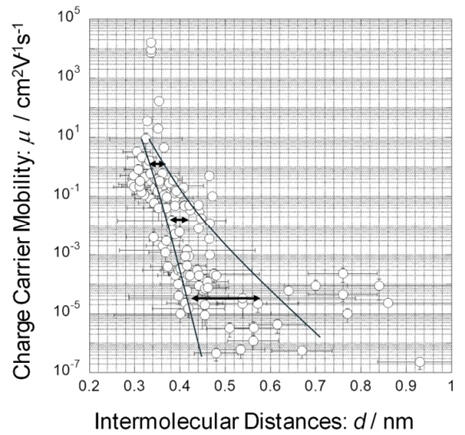A research group comprising Professor Shu Seki, Researcher Paitandi Rajendra (JSPS Research Fellow), Assistant Professor Wookjin Choi, Researcher Samrat Ghosh (JSPS Research Fellow), and Associate Professor Takayuki Tanaka of the Department of Molecular Engineering at Kyoto University, measured the charge mobilities of various molecular substances. The group announced that their analysis results of the measurement has revealed the possibility of breaking Wallach's rule in low-dimensional materials from the perspective of point of singularity in charge transport paths in stacked molecular structures and electronic density of states in chiral molecular assemblies. This result is expected to contribute to the further development of molecular electronic materials. The results were published in the August 20 issue of the international journal Accounts of Chemical Research.

Provided by Kyoto University
Chirality of molecular substances is one of the important properties governing phenomena pertaining to life. Only substances with one type of chirality function in living organisms; however, the reason for this remains unknown. One of the important properties of chiral molecular substances is the Wallach's rule proposed in 1895. This rule states that when molecules with only one type of chirality and molecules with a mixture of chiralities are accumulated, the molecule with the mixture of chiralities will always be heavier (show a greater density). Various chiral molecular substances have been synthesized and studied; however, this rule has not been broken.
To date, the research group has measured and reported the charge mobility of various molecular materials using a proprietary microwave conductivity measurement technique that enables the rapid analysis of electron transport properties of materials (the TRMC method). In this research, the researchers conducted a comprehensive analysis of data from approximately 300 research papers that have been published to date.
The results showed a clear correlation between the intermolecular distance and charge mobility in stacked structures, indicating that the magnitude of fluctuations gradually decreases as the distance between molecules shortens. When the intermolecular distance was shortened to 0.3 nm, it converged to a single point, which is thought to be the point of singularity at which molecular substances overcome thermal fluctuations. Further detailed analysis confirms that only chiral molecular assemblies with broken spatial inversion symmetry and chiral low-dimensional materials show deviations from the correlation between intermolecular distance and charge mobility. The possibility of the existence of a group of materials that break Wallach's rule in systems with low-dimensional assemblies of chiral electron-conjugated molecules was demonstrated.
Seki said, "Our bodies are made up of homochirality, which ultimately leads to Wallach's rule. Homochiral substances are looser than racemic substances and have more space between the molecules. Wallach's rule is applicable in many domains, including biological phenomena. Therefore, we definitely want to investigate why they became homochiral. We never thought that Wallach's rule would be relevant to condensed matter physics, electron flow, or effective mass of electrons."
Journal Information
Publication: Accounts of Chemical Research
Title: Electron Transport over 2D Molecular Materials and Assemblies
DOI: 10.1021/acs.accounts.4c00376
This article has been translated by JST with permission from The Science News Ltd. (https://sci-news.co.jp/). Unauthorized reproduction of the article and photographs is prohibited.




